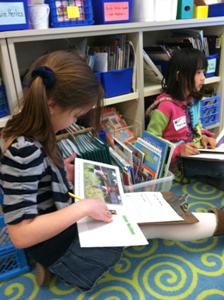Personal Literacy Plans
A Personal Literacy Plan (PLP) is a plan of action used to accelerate a student’s ability to reach grade-level proficiency in literacy. A PLP supports students who require intervention in addition to differentiated core instruction (Tier 1) and articulates a student’s specific needs, establishes goals, and sets the course of action to increase reading proficiency.
A problem-solving approach is used to develop this plan in order to determine a student’s specific needs, establish goals, and set the course of action. The PLP promptly responds to students who are not reading at grade level. This cycle is designed to align to an LEA’s Tier 2 and Tier 3 MTSS and data-based individualization process.
The PLP Cycle includes:
- Identification of Needs
-
Design Intervention Plan
-
Implementation of Interventions
-
Analysis of Outcomes
The development of a PLP is inclusive and involves a system of support not limited to teachers, parents, and administrators.
In grades K-5, the PLP team begins with the classroom teacher and expands to include relevant professionals. At the secondary level, the PLP begins with a specially trained teacher who has demonstrated proficiency in the knowledge and practices of the science of reading and structured literacy and expands to include integral members of the MTSS team. Families should be informed of the PLP process and provided opportunities to engage in the development and implementation of the PLP as appropriate.
PLP guidance has been updated to reflect current practices: the knowledge and practice of the science of reading and structured literacy, the connection between MTSS and reading intervention, and implementation of and analysis of assessment to determine student needs.

